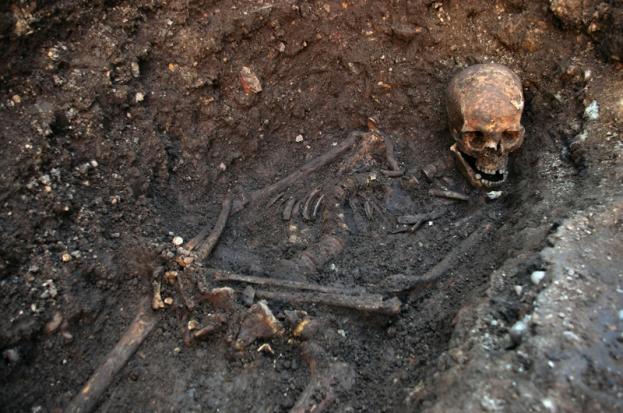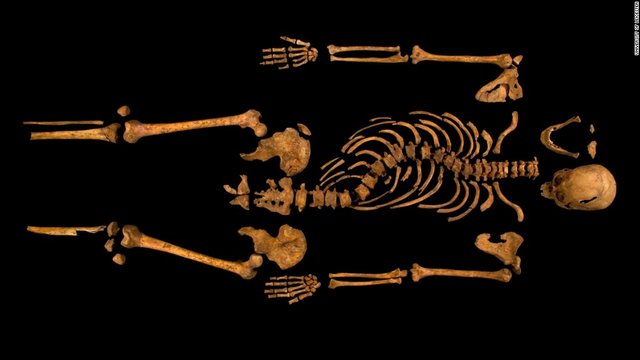The Secret of king Richard III
The Medieval Ages in England died with the death of king Richard III,
and thus changing history

A portrait of king Richard III, painted in 1520 [Source: Wikipedia]
Richard was an excellent swordsman and more so, an horse rider. During the last battle of the Wars of the Roses on the field of Bosworth, the armies of Richard III and Henry Tudor charged into battle. King Richard III fought his way through the armies of Henry Tudor, after charging on his horse for almost one kilometer over the field, and fought skillfully to his end (22 August 1485).
In many literature, Richard III became known to have a hunchback. This idea contrasts to the skillfully described soldier that fought in battle. The mystery remained unanswered for over 5 centuries.

Benedict Cumberland lays the roll of a hunchbacked Richard III in the BBC series of The Hollow Crown
After his death, the body of Richard III was hastily placed into a coffin and buried in the church of Greyfriars in Leicester. But in 1538 (53 years after the burial) the church was demolished and over the centuries there after all kinds of developments occurred over the buried king, still unmoved. After 527 years, the skeleton of the king was found under a car park.
In 2012/13, an archaeological excavation was commissioned by the Richard III Society and after discovering the king, studies on the remains of Richard III followed.

The remains of Richard III found in a car park in Leicester, still in his coffin

The skeleton of Richard III as it is placed in Leicester Cathedral, the new burial location
The secret of Richard became clear: the king had Scoliosis (the bending of the spine). King Richard was after all not a hunchback as many thought, but the question of his swordsmanship still remained. After placing Dominic Smee, a 27 year old man with similar degree and angle of Scoliosis as Richard, through exercises and battle training a conclusion was found. The bending of the spine changed the rib cage placement and due to this the lungs could not expand as much as a normal person's lungs does. This would result in the body to become more quickly tired when placed under conditions where great oxygen consumption in needed (e.g. running and fighting in battle). This explained why Richard III spent more time training on horse back fighting rather than on foot.
As established through Dominic, Richard's breathing difficulties was the only difference between him and the other soldiers on the battlefield. Richard III fought like any other man that day, if not better.
Dominic Smee, retracing the footsteps of Richard III
Before Henry killed Richard, the English king fought through many of Henry's best and biggest soldiers. The personal battle between the king and Henry was also a show of excellent swordsmanship. With a blow to the head, Richard was killed by Henry. With the new evidence, the death of Richard can be explained to be caused by fatigue: Richard became tired while fighting and Henry got a chance to end him. If Richard had a straight spine, the chances of him killing Henry and remaining king would have become larger. If Richard III remained king, the whole British history would have changed drastically from that of what we know today.
Now I wonder:
Did the course of British history rested upon the spine of one man?
Sources:
https://en.wikipedia.org/wiki/Richard_III_of_England
&
It sounds like he was not spineless.